Oscilloscope basics - How to use an oscilloscope and understand basic measurements
Electronic technology is now pervasive in all aspects of our lives. Every day, millions of people use electronic devices such as cell phones, televisions and computers. As electronic technology advances, these devices are running faster and faster. Today, most devices use high-speed digital technology. Engineers need to be able to accurately design and test the components in their high-speed digital devices. For the instrumentation engineers who used to design and test components, they must now also be able to handle high-speed and high-frequency instruments. One such instrument is the oscilloscope.
When designing and testing electronic devices, oscilloscopes are a powerful and very useful tool. They are essential to determine which components of the system are functioning properly and which components are failing. They can also help you verify that the newly designed components meet the expected requirements. An oscilloscope allows you to see what an electronic signal really looks like and is much more powerful than a multimeter. Oscilloscopes are used in a wide range of applications, from the automotive industry to university research labs to aerospace and defense. Many companies rely on oscilloscopes to find defects in time to produce fully functional products.
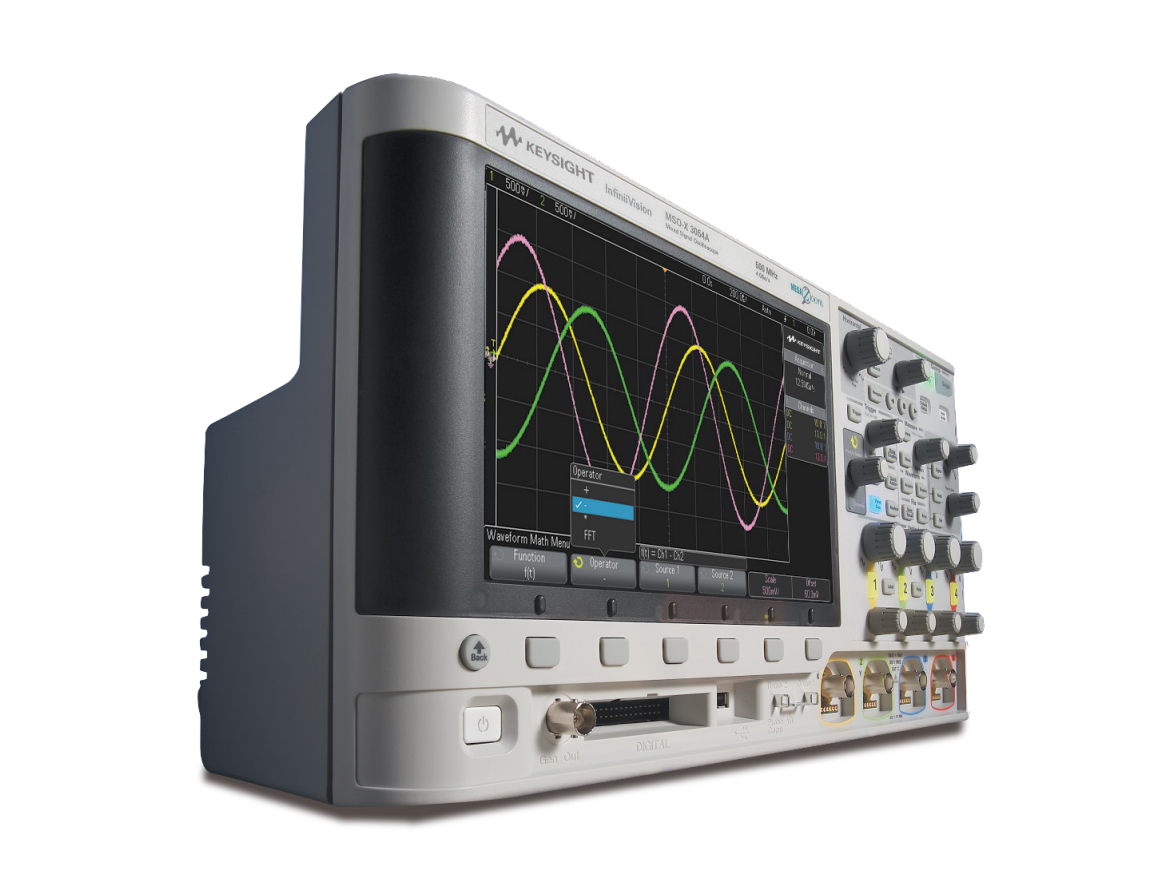
Electronic Signals
An oscilloscope is primarily used to display electronic signals. By looking at the signals displayed on the oscilloscope, you can determine whether the components in an electronic system are working properly. Therefore, to understand how an oscilloscope works, you must understand the basic signal principles.
Wave Properties
An electronic signal is a wave or pulse. The following are the basic properties of waves.
Amplitude
In engineering applications, there are two main definitions of amplitude that are often used. The first is the peak amplitude, which is the amplitude of the maximum displacement of a disturbance. The second is known as the root mean square (RMS) amplitude. To calculate the RMS voltage of a waveform, you first calculate the square of the waveform, find its average voltage, and then take the square root. For a sine wave, the RMS amplitude is 0.707 times the peak amplitude.

Phase Shift
Phase shift is the amount of horizontal translation between two identical waves. It is measured in degrees or radians. For a sine wave, a period is expressed in 360 degrees. Therefore, if two sine waves are half a period apart, their relative phase shift is 180 degrees.
Period
The period of a wave is usually the time it takes for the wave to repeat itself. The period is measured in seconds.
Frequency
Every periodic wave has a frequency. The frequency is the number of times the wave repeats itself in one second (if measured in Hertz). In addition, frequency is the reciprocal of period.
Waveform
A waveform is the shape or expression of a wave. A waveform can provide you with a great deal of information about a signal. For example, it can tell you whether the voltage changes suddenly, linearly, or stays the same. There are many types of standard waveforms, but this section will only cover the waveforms we encounter most often.
Sine waveforms
Sine waves are usually associated with alternating current (AC) power sources, such as the electrical outlets in your home. Sine waves do not always have a constant peak amplitude. If its peak amplitude decreases over time, we call the waveform a damped sine wave.
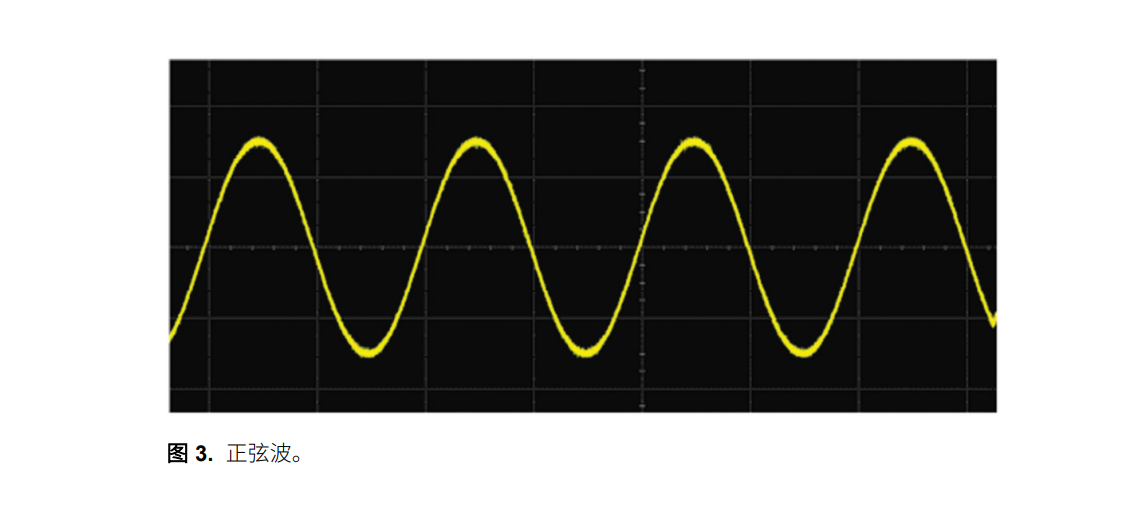
Square/rectangular wave
Square waves exhibit periodic jumps between two different values and have equal lengths for the high and low segments. The rectangular wave differs in that the length of the high and low segments are not the same.
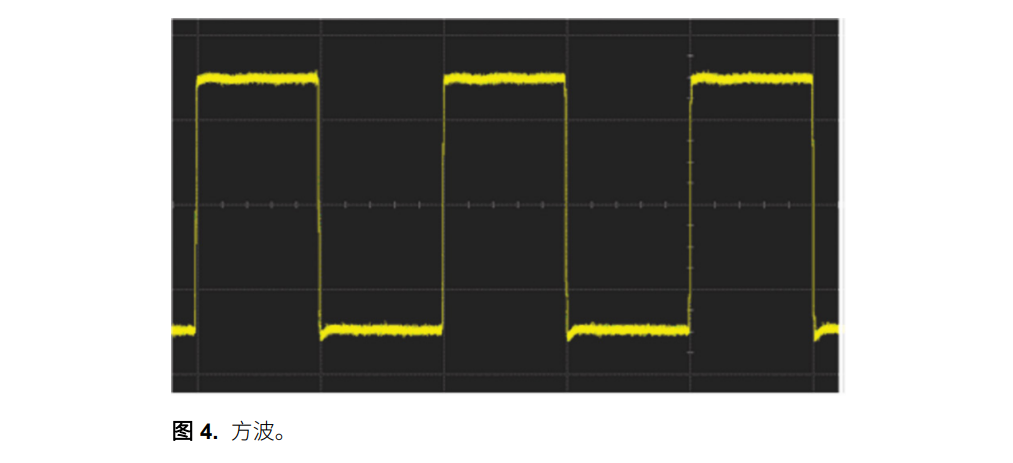
Triangle wave/ramp wave
In a triangle waveform, the voltage varies linearly with time. The edges are called ramps because the waveform either ramps up or down to a certain voltage. A sawtooth wave looks similar in that both the leading and trailing edges also have a linear voltage response over time. However, the opposite edge is almost steeply falling.
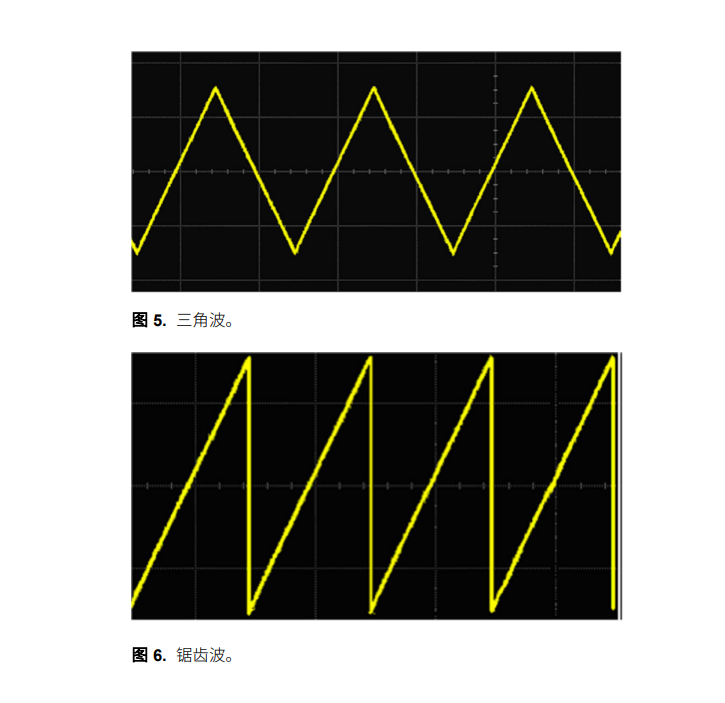
Pulses
A pulse is a single disturbance that appears suddenly at an otherwise constant voltage. Think of it as if we flicked a switch in a room to turn on a light and then quickly turned it off. A series of pulses is called a pulse train. Continuing our analogy, it is as if we turn the lights on and off quickly, one at a time. Pulses are common waveforms that appear as burrs or errors in the signal. Pulses may also be waveforms if the signal is carrying a single piece of information.
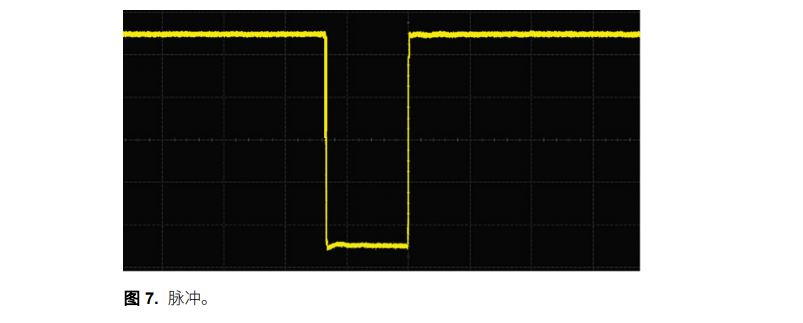
Composite waves
Waves can also be a mixture of the above waveforms. They are not necessarily all periodic, but may present very complex waveforms.
Electronic technology is now pervasive in all aspects of our lives. Every day, millions of people use electronic devices such as cell phones, televisions and computers. As electronic technology advances, these devices are running faster and faster. Today, most devices use high-speed digital technology. Engineers need to be able to accurately design and test the components in their high-speed digital devices. For the instrumentation engineers who used to design and test components, they must now also be able to handle high-speed and high-frequency instruments. One such instrument is the oscilloscope.
When designing and testing electronic devices, oscilloscopes are a powerful and very useful tool. They are essential to determine which components of the system are functioning properly and which components are failing. They can also help you verify that the newly designed components meet the expected requirements. An oscilloscope allows you to see what an electronic signal really looks like and is much more powerful than a multimeter. Oscilloscopes are used in a wide range of applications, from the automotive industry to university research labs to aerospace and defense. Many companies rely on oscilloscopes to find defects in time to produce fully functional products.

Electronic Signals
An oscilloscope is primarily used to display electronic signals. By looking at the signals displayed on the oscilloscope, you can determine whether the components in an electronic system are working properly. Therefore, to understand how an oscilloscope works, you must understand the basic signal principles.
Wave Properties
An electronic signal is a wave or pulse. The following are the basic properties of waves.
Amplitude
In engineering applications, there are two main definitions of amplitude that are often used. The first is the peak amplitude, which is the amplitude of the maximum displacement of a disturbance. The second is known as the root mean square (RMS) amplitude. To calculate the RMS voltage of a waveform, you first calculate the square of the waveform, find its average voltage, and then take the square root. For a sine wave, the RMS amplitude is 0.707 times the peak amplitude.

Phase Shift
Phase shift is the amount of horizontal translation between two identical waves. It is measured in degrees or radians. For a sine wave, a period is expressed in 360 degrees. Therefore, if two sine waves are half a period apart, their relative phase shift is 180 degrees.
Period
The period of a wave is usually the time it takes for the wave to repeat itself. The period is measured in seconds.
Frequency
Every periodic wave has a frequency. The frequency is the number of times the wave repeats itself in one second (if measured in Hertz). In addition, frequency is the reciprocal of period.
Waveform
A waveform is the shape or expression of a wave. A waveform can provide you with a great deal of information about a signal. For example, it can tell you whether the voltage changes suddenly, linearly, or stays the same. There are many types of standard waveforms, but this section will only cover the waveforms we encounter most often.
Sine waveforms
Sine waves are usually associated with alternating current (AC) power sources, such as the electrical outlets in your home. Sine waves do not always have a constant peak amplitude. If its peak amplitude decreases over time, we call the waveform a damped sine wave.

Square/rectangular wave
Square waves exhibit periodic jumps between two different values and have equal lengths for the high and low segments. The rectangular wave differs in that the length of the high and low segments are not the same.

Triangle wave/ramp wave
In a triangle waveform, the voltage varies linearly with time. The edges are called ramps because the waveform either ramps up or down to a certain voltage. A sawtooth wave looks similar in that both the leading and trailing edges also have a linear voltage response over time. However, the opposite edge is almost steeply falling.

Pulses
A pulse is a single disturbance that appears suddenly at an otherwise constant voltage. Think of it as if we flicked a switch in a room to turn on a light and then quickly turned it off. A series of pulses is called a pulse train. Continuing our analogy, it is as if we turn the lights on and off quickly, one at a time. Pulses are common waveforms that appear as burrs or errors in the signal. Pulses may also be waveforms if the signal is carrying a single piece of information.

Composite waves
Waves can also be a mixture of the above waveforms. They are not necessarily all periodic, but may present very complex waveforms.







